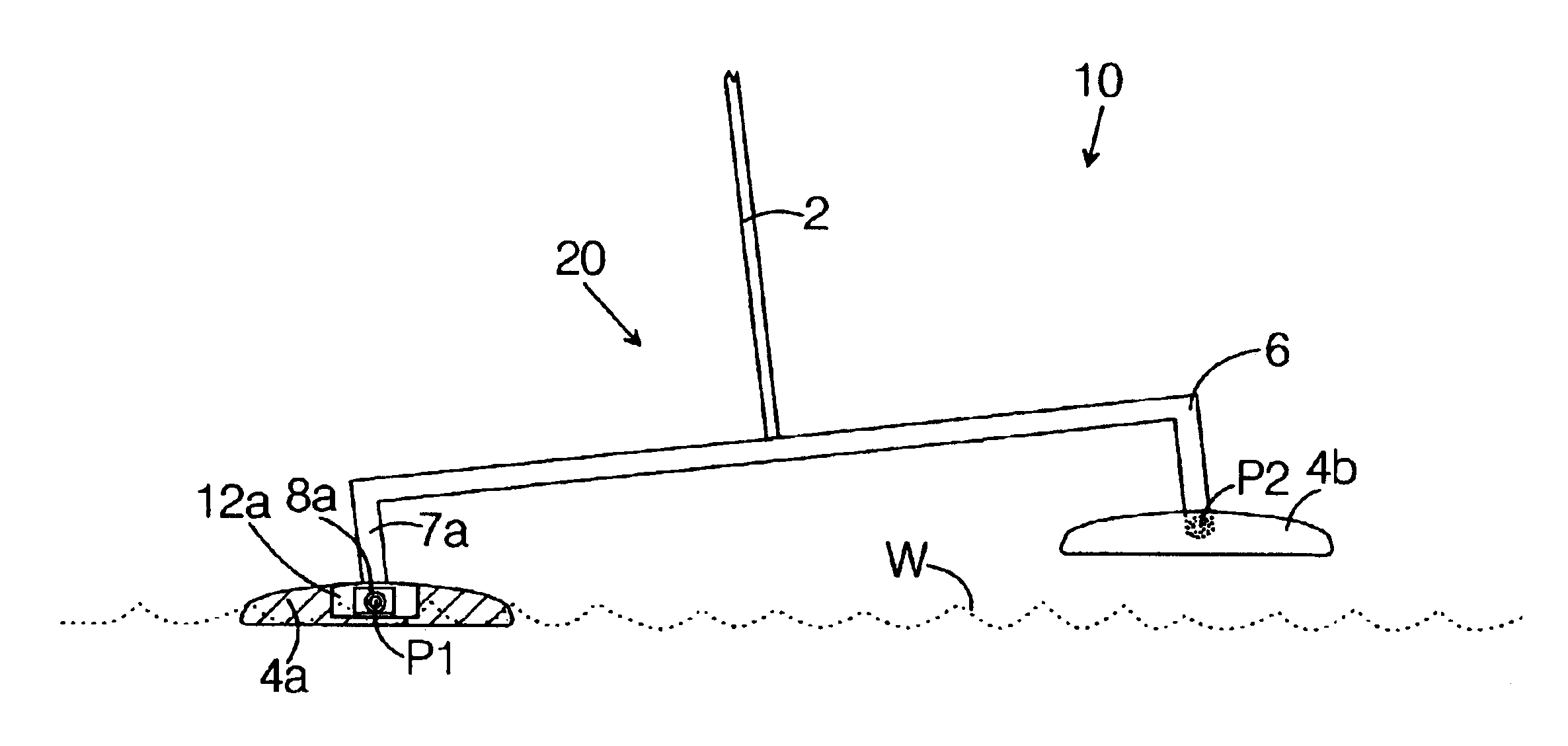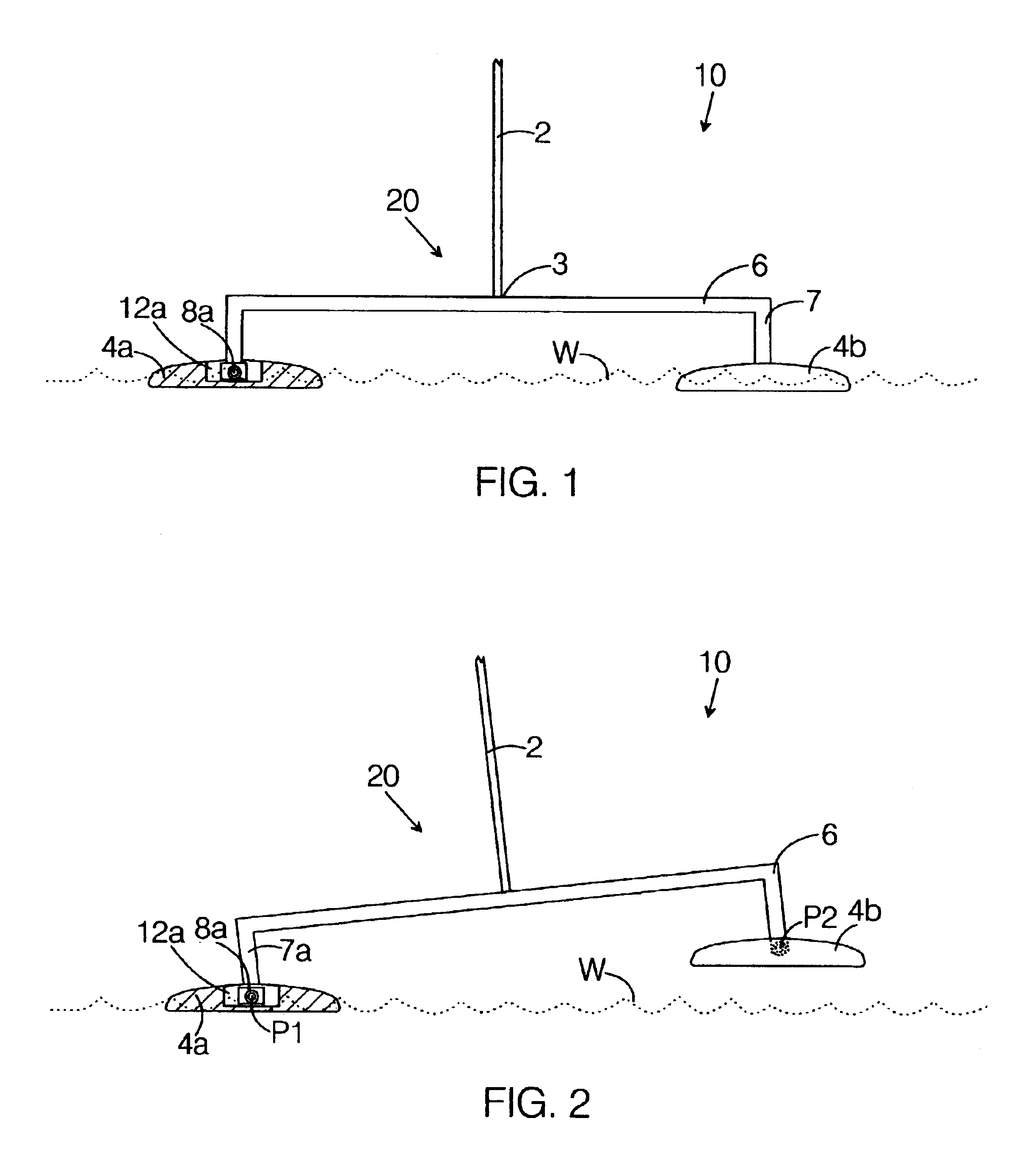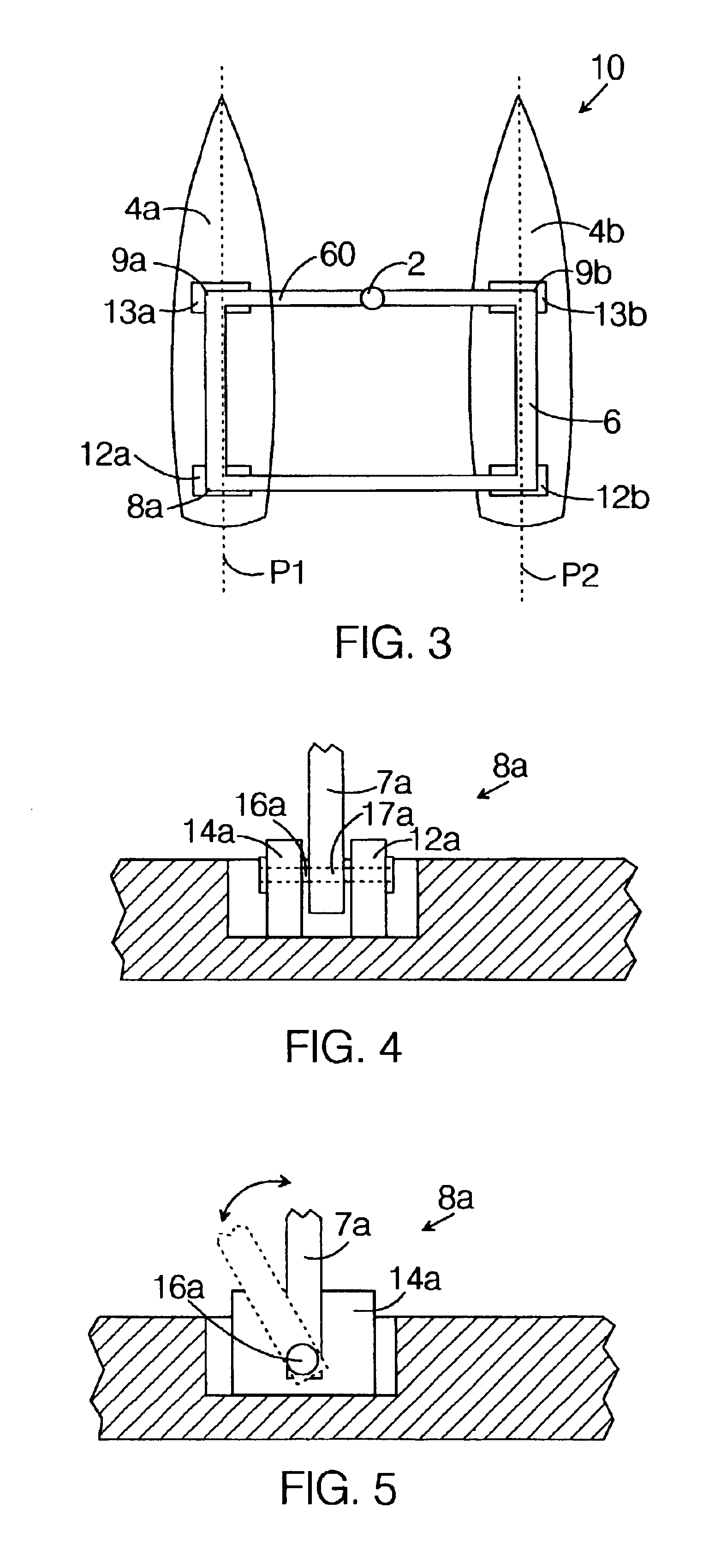Articulated multi-hull water craft
a multi-hull, water craft technology, applied in the field of sailboats, can solve problems such as sudden stop planning, and achieve the effect of easy loading
- Summary
- Abstract
- Description
- Claims
- Application Information
AI Technical Summary
Benefits of technology
Problems solved by technology
Method used
Image
Examples
Embodiment Construction
FIG. 1, FIG. 2, and FIG. 3 schematically show a catamaran vessel 10 according to the present invention, the vessel 10 including a first hull 4a, a second hull 4b, and a superstructure 20, where both the first hull 4a and the second hull 4b are flat on the bottom. The superstructure 20 includes a platform 6 and a mast 2, the mast 2 having a lower mast end 3 rigidly connected to the platform 6.
FIG. 1 shows the vessel 10 under a condition of zero wind; FIG. 2 shows the vessel 10 in a heeling configuration, under wind, illustrating the articulation between the superstructure 20 and the first hull 4a and the second hull 4b; and FIG. 3 is a topdown view of the vessel 10 that shows that the platform 6 has four sides, one of which is a mast-support beam 60. The mast-support beam 60 is the leading edge of the platform 6.
Because of the bilateral symmetry of the vessel 10, it is only necessary to describe one side of it. FIG. 3 shows the first hull 4a to have a first forward platform mount 13a...
PUM
 Login to View More
Login to View More Abstract
Description
Claims
Application Information
 Login to View More
Login to View More - R&D
- Intellectual Property
- Life Sciences
- Materials
- Tech Scout
- Unparalleled Data Quality
- Higher Quality Content
- 60% Fewer Hallucinations
Browse by: Latest US Patents, China's latest patents, Technical Efficacy Thesaurus, Application Domain, Technology Topic, Popular Technical Reports.
© 2025 PatSnap. All rights reserved.Legal|Privacy policy|Modern Slavery Act Transparency Statement|Sitemap|About US| Contact US: help@patsnap.com



